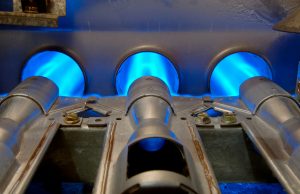 With the coming of spring, our heating systems are going to see less and less use as the temperatures start to warm. And yet ironically, this is the time of the year when we tend to see more heating repair calls than any other. Furnaces and other heating systems have been running for months nonstop, which is why they tend to experience sudden breakdowns and other problems just as they reach the end of winter.
With the coming of spring, our heating systems are going to see less and less use as the temperatures start to warm. And yet ironically, this is the time of the year when we tend to see more heating repair calls than any other. Furnaces and other heating systems have been running for months nonstop, which is why they tend to experience sudden breakdowns and other problems just as they reach the end of winter.
Even worse, there may be less pressing issues present that won’t strictly shut your heating system down, but can certainly add to the wear and tear on it. That means it will cost more to run, and may leave you with a nasty repair job to deal with next fall (when temperatures are dropping and you need your heating system to perform).
Before our cool days end for the season, it’s usually a good idea to run your heater for about 20 minutes and watch very closely for signs of trouble. While you should never attempt to diagnose a problem with your heating system (that requires formal training and licensing), you can certainly check your system for anything out of the ordinary. Most of the time, that’s a sure sign you need a repair technician to take a look. If you notice anything out of the ordinary with your heater, turn it off and call in a professional.
Common Signs
What kinds of signs indicate a heating problem? They can include, but are not limited to, the following:
- Strange Noises. This can include anything you don’t recognize as part of the normal sounds of your heater: anything from hums and whirs to clanks and rattles. In most cases, they will stop and start with the starting and the stopping of your system.
- Cool Air, or air from the vents that isn’t as warm as you’d expect it to be. This can be caused by anything from a clogged burner to a breach in the ducts pulling cool air into your system.
- Puddles and Leaks. If your home has a boiler or similar system, you might spot small puddles or leaks in the piping. In those cases, the technician can seal the leak or hunt down the cause quickly.
- Low Air Flow. Homeowners with a forced-air furnace may notice that the air isn’t blowing from the vents as fast as it might. That can be caused either by a blockage in the ducts or by a problem with the fan apparatus itself.
- Short Cycling. This is the habit of a furnace to turn on and off very quickly, multiple times throughout the day. It can be extremely damaging since furnaces use far more energy (and undergo far more stress) turning on and off than they do simply running. Ideally, your furnace should run at least 15 minutes at a clip in order to avoid the kind of catastrophic strain that short cycling can produce.
For quality heater repair services in Lexington, MA, call on the friendly professionals at Cooling Unliited, Inc. today!

